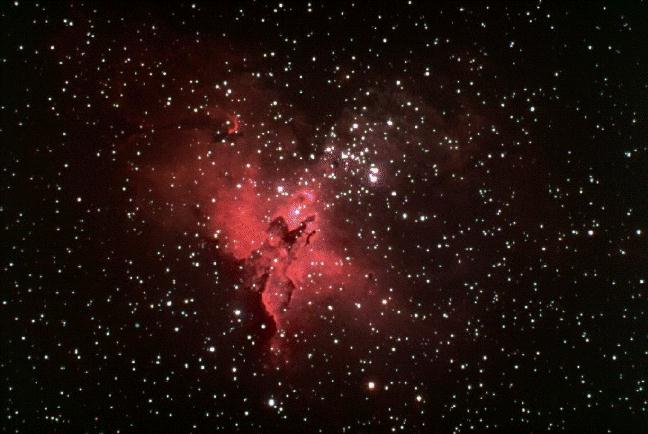What is our Location in the Milky Way Galaxy?
This issue was resolved by Shapley through observations of the ancient star
clusters known as
globular clusters. The globular clusters are believed to have formed
very early in the history of the Milky Way and reflect the initial shape of
the cloud which formed the Galaxy (and, as such, are distributed in a
spherical distribution about the center of the Galaxy). Using
the variable stars known as
RR Lyrae stars
as distance indicators,
Shapley determined the distribution of globular clusters in the
Milky Way galaxy (right) and
demonstrated that the Sun was not in the center of the Milky Way, it was
in the disk of the Galaxy.
Comment--Variable stars will be an important topic later as they
serve as among the most reliable of distance indicators. The most
important class of variable stars are the Cepheid variables which are
evolved stars which are undergoing pulsations and periodically
varying in
luminosity. The key observational fact about them is that their
intrinsic average luminosities are related to their pulsation periods
For example, see
Cepheid variables in
M100.
and an animation of the
Cepheid variables in M100.
|





 Lecture
1
Lecture
1